Yogyakarta |
 |
<<Click to see original |
With all the news of doom and gloom hitting the tourism sector over the past few months, it is refreshing to find one tourist attraction that appears to be bucking the trend of the worldwide economic downturn.
Yogyakarta – Indonesia's third largest city, whose fortunes are largely dependent on tourism – is probably best known for its wealth of Buddhist and Hindu temples, most notably Borobudur – the world's largest and many would argue most beautiful Buddhist temple, which is decorated with 2,672 relief panels and 504 Buddha statues.
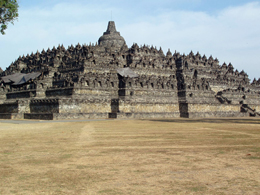
It is constructed on a hill and consists of eight layers. The first five layers are square terraces with the sculpted walls showing scenes from Buddhist mythology. The topmost layers are circular and each has a circle of bell-shaped stupas (Buddhist shrines). Pilgrims would walk through some 3 miles of passages and stairways before reaching the summit. The design was meant to depict the structure of the Universe with man's progression through life towards Nirvana.
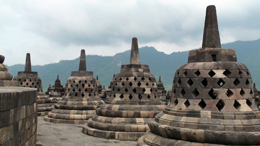
Borobudur dates back to the 8th and 9th centuries, but was abandoned following the fourteenth century decline of Buddhist and Hindu kingdoms in Java and the subsequent conversion to Islam. It lay hidden for centuries under layers of volcanic ash and jungle growth. But in 1814 Sir Thomas Stamford Raffles, the then British ruler of Java, was advised of its location by native Indonesians and since then the temple has been preserved through several restorations, the largest undertaken between 1975 and 1982 by the Indonesian government and UNESCO, following which the monument was listed as a UNESCO World Heritage Site in 1991.
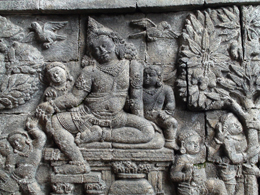
The monument is the single most visited tourist attraction in Indonesia. In 1974, 260,000 tourists - of whom 36,000 were foreigners - visited the monument. Within 20 years, this figure rose to 2.5 million visitors annually (of whom 80% were domestic tourists), before the country's economy crisis kicked in.
In the first four months of 2009, visitor numbers were up by 10 per cent on the previous year to 614,000, with January showing a 30 per cent hike in visitors. But foreign visitors make up only 6 per cent of that mix albeit that their numbers are still increasing at the same rate.
Similar numbers are recorded at the Prambanan Hindu temples compound which is the biggest temple complex in Java. There are 224 temples altogether, with three on the central terrace at up to 47 metres high dominating the complex. Of particular appeal is the wealth of sculptural detail to be found, of which the most famous is on the inner wall of the balustrade featuring the Ramayana epic. Following the May 2006 earthquake, however, many parts of Prambanan are roped off to visitors until they are eventually made safe.
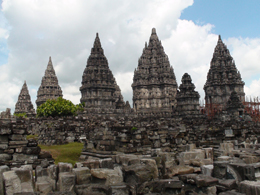
But whilst visitor numbers are increasing, what is noticeable is their change of origin. Yogya's Hyatt Regency hotel caters predominantly for the Japanese influx of tourists, and bookings from Japan have fallen sharply, perhaps by as much as 30 per cent. The more downmarket Ibis, however, which caters mainly for domestic visitors, is almost permanently full; whilst the Amanjiwo – one of the five top end luxury boutique Aman resorts in the country, where rates start at $700 per night rising to $2,600 for its top suite – continues to attract the rich and famous from all corners of the globe, especially the Middle East.
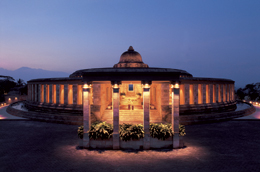
Amanjiwo is almost a destination in its own right, lying within a natural amphitheatre at the foot of the Menoreh Hills overlooking Borobudur. It has its main circular building framed by 35 domed-roof suites individually rimmed by stone walkways and high walls.
By any measure, Yogyakarta must surely rank as one of the most beautiful tourist destinations in the country – a veritable jewel in the crown of Indonesia.
